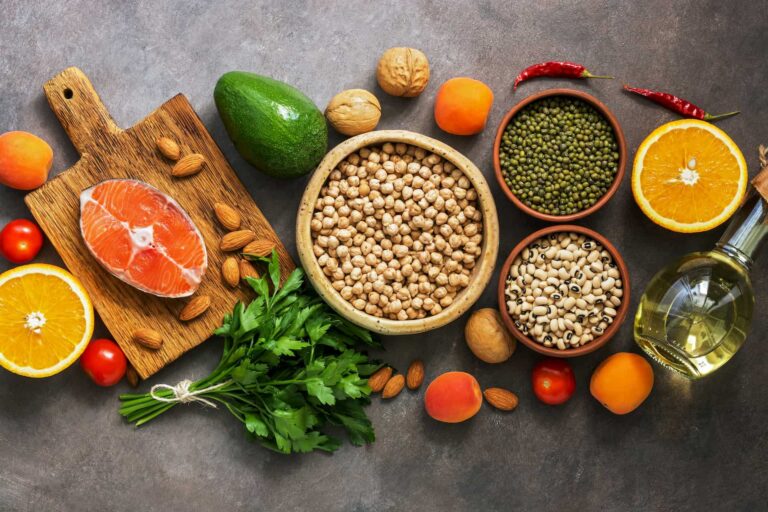
Iron-rich diets: How useful are they for maintaining normal iron levels?
People suffering from iron deficiency or increased bodily needs for this nutrient can […]
Iron is a precious nutrient for our body because it plays an important role in the formation of haemoglobin, myoglobin and some important enzymes: cytochromes. Iron also promotes the proper development of the immune system and supports normal cognitive function in adults and children. Let’s analyse which foods are rich in iron and how they can be useful for the body’s normal needs.
Foods containing iron are both animal-based (e.g., liver, spleen, muscle) and plant-based (green leafy vegetables, legumes, dried fruit). However, when talking about iron-rich foods, a small note must be made regarding the bioavailability of the iron consumed through diet.
Not all the iron consumed through diet is absorbed in the same way by our body. Iron in animal-based food is more easily absorbed than iron in plant-based food. Why? The iron present in meat is mainly haem iron, an iron bound to particular substances known as porphyrins, which can be absorbed as such in the bowel at specific sites. Non-haem iron, present in plant-based food, is less protected from the presence of any substances that decrease its absorption and has no specific absorption sites.
Haem iron is derived from haemoglobin and myoglobin in meat. The porphyrin ring, which, together with iron, forms the chemical complex known as haem, protects iron from reactions with other substances present in the bowel and promotes its solubility and intestinal absorption by enterocytes (the epithelial cells present on the intestinal villi).
The iron contained in vegetables, legumes and fruit, on the other hand, is an inorganic iron or non-haem iron. This type of iron can be present in two forms: bivalent iron (Fe2+) or trivalent iron (Fe3+). Our body is able to absorb bivalent iron, whilst it has difficulty absorbing trivalent iron. The basic environment of the intestine, where dietary iron is absorbed, however, promotes the formation of trivalent iron. In order for the latter to be absorbed by intestinal cells, it must be reduced to bivalent iron by an enzyme: duodenal cytochrome B.
The absorption of dietary iron is influenced by the concentration of iron in the body: in the event of iron deficiency or sideropenia increases the absorption of iron in the intestine; in the event of high iron, i.e., high concentrations of iron in the body, intestinal absorption is decreased.
In addition, certain substances present in food may promote or discourage the absorption of iron in food. Vitamin C (ascorbic acid) promotes the absorption of iron, whilst phytates, oxalates, tannins and calcium hinder the absorption of this precious nutrient.
A short while ago, we said that animal-based food contains haem iron, which is more easily assimilated by our body, whilst plant-based food contains only non-haem or inorganic iron. A varied and balanced diet involves consuming the correct amount of each food to provide the body with the right amount of nutrients. However, in the event of deficiency or increased requirements, it may be important to know which foods are richest in iron.
The animal-based food richest in iron include the following:
The plant-based foods richest in iron include:
It must be mentioned that only part of the iron consumed through diet is absorbed by the body. Knowing the variables and foods that regulate their absorption is a useful approach to keeping normal iron levels in the body under control.
A balanced diet, alternating between the foods listed above, is usually sufficient to maintain normal levels of iron in the body. Some specific physiological conditions (menstrual cycle, pregnancy, breastfeeding), however, may require an increased need for iron. In this case also, a healthy and balanced diet is the first step to preventing deficiencies, but sometimes diet alone is not enough. In these cases, it is advisable to consult your doctor or pharmacist to consider using a dietary supplement containing iron.
The SiderAL® range of dietary supplements based on Ferro Sucrosomiale®, a technology that promotes the high digestibility and absorption of iron, can be a valid nutritional supplement in cases of iron deficiency or increased iron requirements.
The technology that guarantees the best absorption of Iron.
Find out moreRegistered Office Via Campodavela, 1 56122 Pisa
Tel. +39 050 7846500
Fax +39 050 7846524
C.F. / P.Iva / Reg. Impr. 01679440501
Cap.Soc. € 1.123.097,70
I.V. | REA 146259
pharmanutra.it